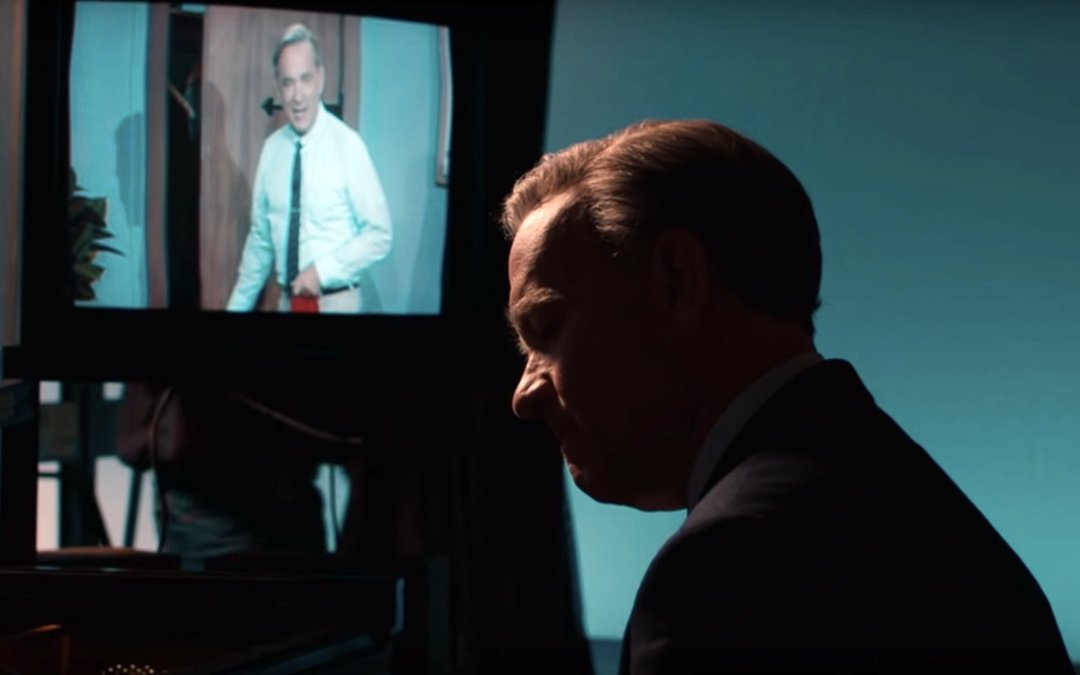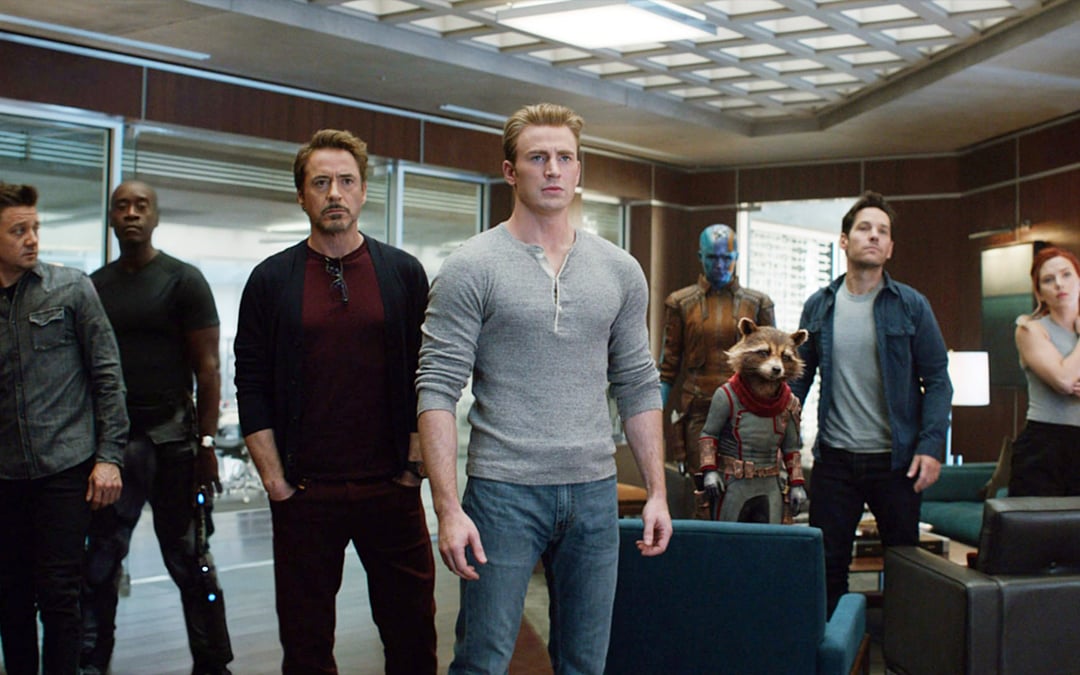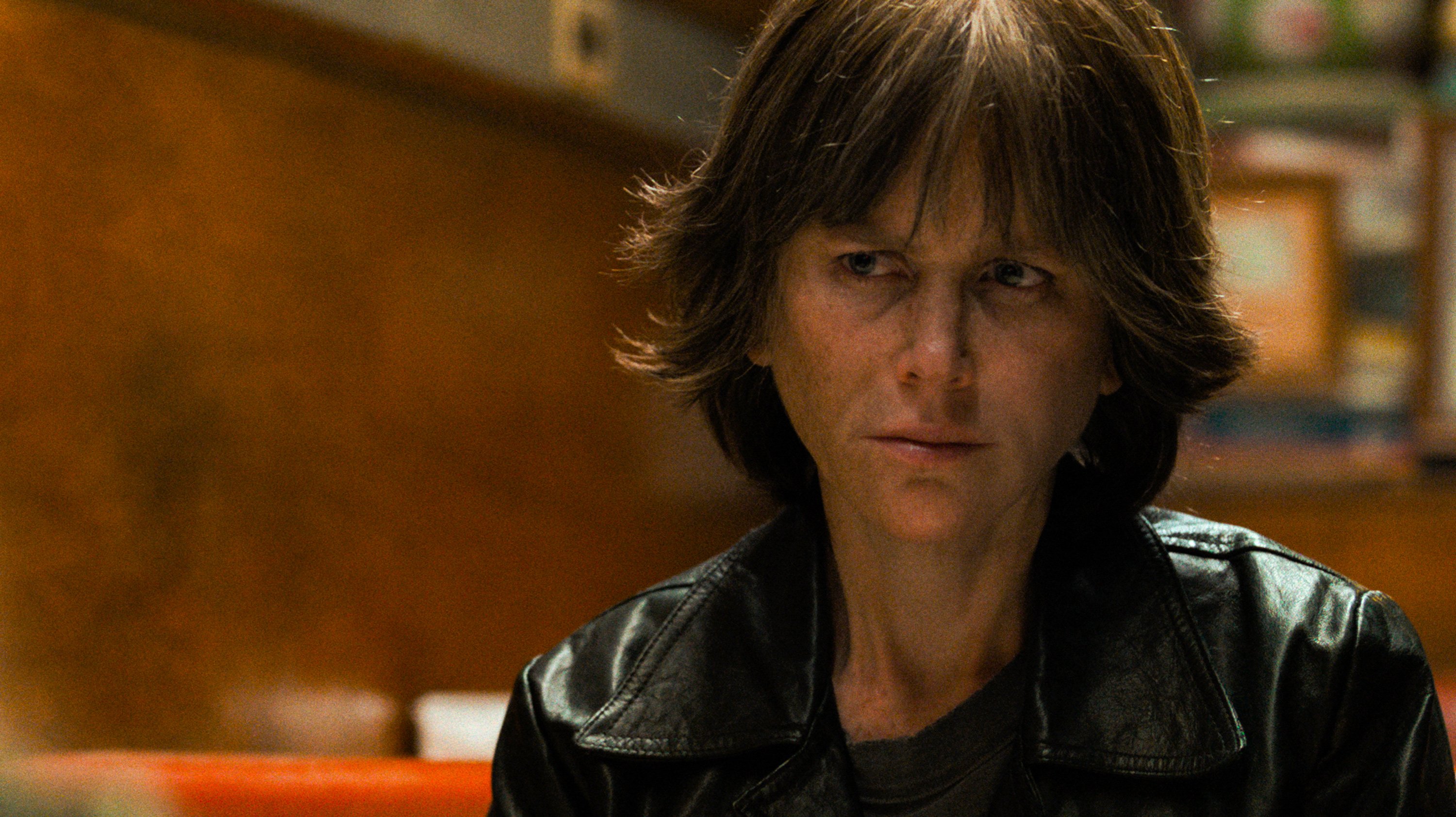All The Write Moves: 'The Irishman'
November 18, 2019
It’s no secret that the climax of The Irishman, director Martin Scorsese’s latest epic about organized crime, dramatizes a questionable conspiracy theory involving the disappearance of real-life union leader Jimmy Hoffa. After all, The Irishman was adapted from Charles Brandt’s 2004 book I Heard You Paint Houses, in which alleged Mafia hitman Frank “The Irishman” Sheeran claims to have killed Hoffa on orders from the Mob. According to Brandt, Sheeran’s confession solved a mystery that vexed investigators for nearly three decades. But since no physical evidence was found to corroborate Brandt’s assertion, The Irishman is predicated on a possibility rather than a certainty.
This seems as reasonable a place as any to begin a conversation about writing techniques utilized by The Irishman’s screenwriter, Steven Zaillian, since the movie is so prismatic and sprawling that it could be examined from myriad perspectives. Among other things, the movie is a character study, a family saga, a meditation on friendship, a treatise on aging and memory, and a true-crime story. It is also, not insignificantly, something of a capstone for Scorsese and producer/star Robert De Niro, who have been telling crime stories together since the early 1970s and now view the genre through a mature lens.
Perhaps that’s why they found Sheeran’s story so interesting, even though the most sensational aspect of the story is unproven. We all write the stories of our own lives through the simple act of living. Therefore, doesn’t each of us have the prerogative to frame our own narratives in a manner of our choosing? In faithfully transferring Sheeran’s controversial claims to the screen, The Irishman relates personal history instead of empirical history.
That being the case, Zaillian faced a significant craft challenge: He was tasked with creating a sufficient degree of emotional and historical authenticity that the most important moment in The Irishman would ring true, even though he had no idea whether that moment was actually true. What Zaillian did is a wholly separate exercise from brazenly rewriting history, as Quentin Tarantino occasionally does, and it is of course very different from meticulously documenting history, as the writers of films based on accepted facts do.
A history of violence
In order to establish context for the title character’s relationship with Hoffa, Zaillian uses nearly an hour’s worth of screen time to define Sheeran before Hoffa enters the narrative. Viewers first meet Sheeran as a wheelchair-bound senior living in a nursing home. By telling the story of his life, Sheeran triggers flashbacks that depict how his innate brutality made him an ideal candidate for working with criminals.
Working as a truck driver following his military service in World War II, Sheeran befriends Russell Bufalino (Joe Pesci), a Pennsylvania crime boss. Meanwhile, Sheeran begins a family. In one key incident, Sheeran learns that a local grocer shoved Sheeran’s young daughter, Peggy (played as a child by Lucy Gallina), during an argument. Sheeran wildly overreacts by beating the grocer and then stomping the man’s fingers until his hand is a bloody mess.
This sequence does more than convey Sheeran’s capacity for violence. It also demonstrates how Sheeran’s brutality creates profound estrangement from Peggy (and Sheeran’s other children). One of the most effective tropes in The Irishman involves shots of Peggy staring at her father when he’s doing something immoral. This trope gets activated by the grocer sequence, which sets up the idea of Peggy as an externalized representation of Sheeran’s conscience.
Other characters in the movie see the parts of Sheeran they want to see. His Mafia associates view him as a useful tool, while Hoffa views him as a friend and peer but also, problematically, a subordinate. Peggy sees Sheeran as a monster unburdened by morality. Over the course of the movie, viewers sense that the title character’s deepest anguish manifests whenever he, however fleetingly, sees himself through his daughter’s eyes.
Takeaway: Using a supporting character as a mirror who reflects a protagonist’s secret self is a powerful thematic device.
Caught in a trap
By demonstrating loyalty, trustworthiness, and a willingness to “paint houses” (i.e., kill people), Sheeran gains a position of power in Bufalino’s circle. This compels Bufalino to recommend Sheeran when Hoffa (Al Pacino) needs a dirty job done. Soon Sheeran becomes Hoffa’s right-hand man, a combination bodyguard and enforcer whom Hoffa eventually installs as the leader of an important local.
Once again, Zaillian paints a complex picture. Hoffa sees enemies everywhere, so the idea that he can rely on Sheeran is a source of great comfort. Yet the irony of the relationship between these characters — that Sheeran is fated to become Hoffa’s killer — lingers over every scene between the men. Even for viewers who watch The Irishman unaware of Sheeran’s dubious confession, ominous clues are everywhere. In one sequence, Sheeran takes a side gig torching a business for a low-level goon, only to discover that the business is partly owned by a crime boss. The calm manner in which Sheeran receives news of the goon’s murder speaks volumes. He understands that certain lines get crossed only once.
Accordingly, the closer Sheeran becomes to Hoffa, the more he tries to remind Hoffa about the consequences of crossing those lines. The Irishman commits wholeheartedly to the popular theory that Hoffa’s career was dependent upon Mob support, then suggests that Hoffa sealed his fate by hubristically believing he could tell the Mob what to do, instead of the other way around.
Once Hoffa’s relationship with the Mob sours, Sheeran finds himself caught between two powerful forces. This adds an emotional component to the aforementioned climax. Tasked with eliminating Hoffa, Sheeran weighs loyalty to a friend against the risks of crossing the Mob. He wrestles with an impossible choice even though he knows that he really doesn’t have any choice at all.
Takeaway: Facing a no-win situation forces a character to examine the decisions that led to the fateful moment.
A witness to history
Partially because of his association with Bufalino and partially because of his association with Hoffa, Sheeran becomes a witness to pivotal moments in American history during the 1950s, ’60s and ’70s. In some sequences, Sheeran’s proximity to events is peripheral, lending these sequences a bit of a Forrest Gump quality. A good example is the bit involving the CIA’s notoriously botched Bay of Pigs operation in Cuba. Yet in other sequences, Sheeran has a front-row seat to history, culminating in his alleged murder of Hoffa.
This naturally raises the question of why The Irishman was made on an epic scale, seeing as how the basic DNA of the picture is fairly intimate. Attributing the scope of The Irishman to directorial indulgence is too facile, particularly given Scorsese’s long record of using character-driven stories to explore larger social themes. So why does Sheeran’s story merit the big-canvas treatment? Some possible answers can be found in the way Zaillian tells the story.
As Zaillian demonstrates in scene after scene, the role that Sheeran plays in historical events is utilitarian. During early sequences, he’s a minor functionary in Bufalino’s operation, whacking so many people that a darkly amusing montage sequence features Sheeran tossing weapons into a river as a means of making incriminating evidence disappear. During later sequences, Sheeran performs more crucial functions, as when he completes the errand that ties him to the Bay of Pigs. And in the climax, he completes his most consequential task, the killing of Hoffa.
Yet even during that sequence, dialogue makes clear that if Sheeran doesn’t do the deed, somebody else will. For all his seeming clout, Sheeran is expendable.
It’s possible that De Niro, Scorsese and Zaillian saw Sheeran as a mechanism for expressing the ugly fact that history requires people like Sheeran. Soldiers are the cogs that keep the wheel of organized crime grinding along. So too are soldiers required for any other corrupt organization to thrive. At various times in The Irishman, Sheeran and people like him do the bidding of corrupt business owners, corrupt government officials, and corrupt labor leaders. Seen in that light, The Irishman justifies its epic scope by presenting Sheeran as an avatar for the countless men and women whose bloody handiwork produced the world history that we naïvely believe we fully understand.
Takeaway: Framed thoughtfully, the story of a seemingly minor historical figure can have major sociocultural implications.
Written by: Peter Hanson
Peter Hanson is a Los Angeles-based writer, filmmaker and teacher. He directed the screenwriting documentary Tales from the Script, and he teaches at Pepperdine University and UCLA Extension. He provides script consulting at www.GrandRiverFilms.com.- Topics:
- Discussing TV & Film




